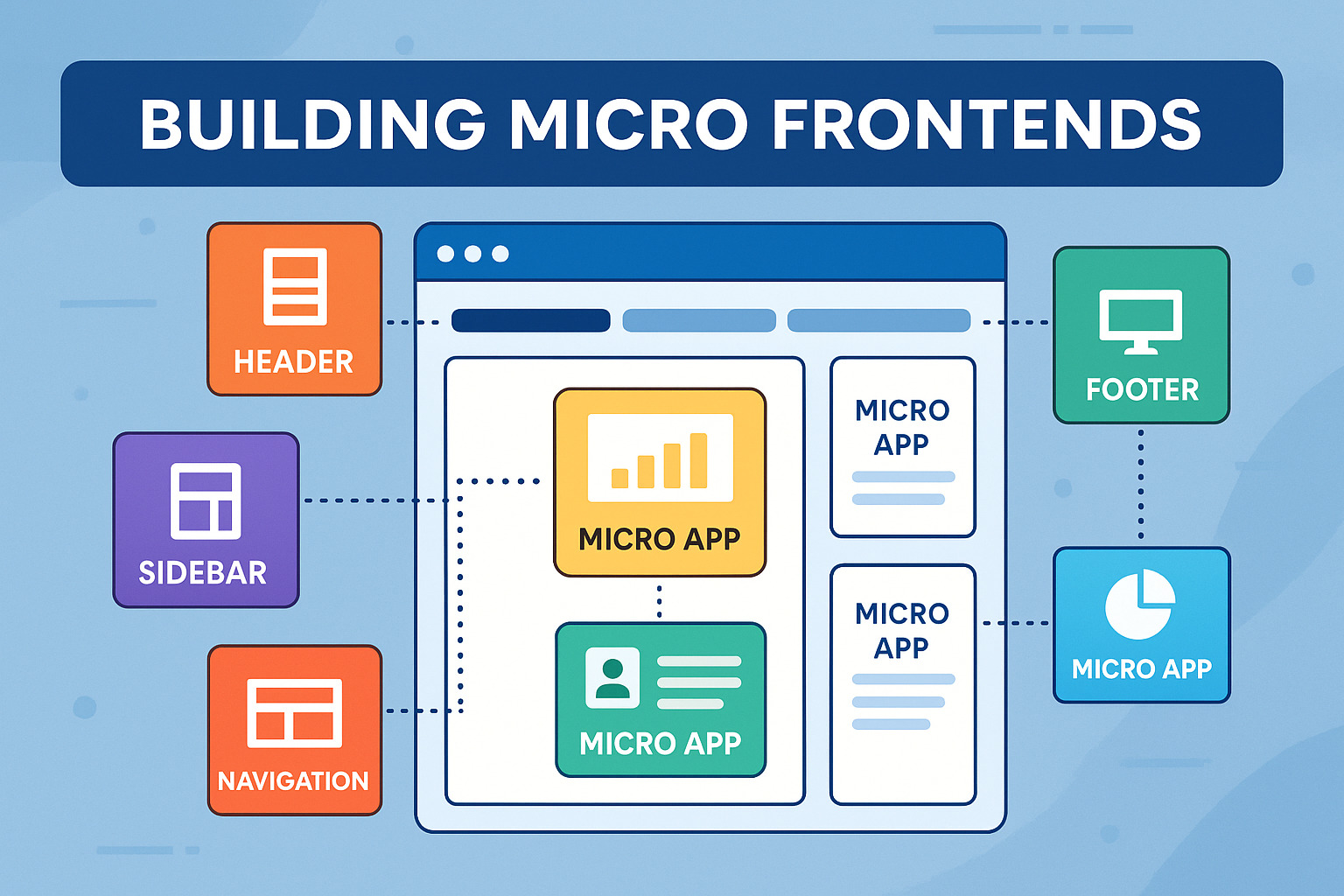Building Micro Frontends: Essential Tools & Best Practices
- 1 min read
Explore the architecture of micro frontends, discover the top tools to build them, and learn key tips to ensure scalable, maintainable frontend applications.

Modern web applications are becoming increasingly complex, and developers need a scalable way to manage them. Enter micro frontends — an architectural approach where a frontend app is divided into smaller, manageable pieces owned by independent teams.
Just as microservices revolutionized backend development, micro frontends are transforming how we structure frontend applications.
What Are Micro Frontends?
Micro frontends split a monolithic frontend into multiple smaller applications. Each micro frontend is a self-contained unit, developed and deployed independently, and often aligned to a specific feature or business domain.
This structure enables teams to:
- Work autonomously
- Choose different tech stacks if needed
- Release features faster
- Reduce deployment risks

When to Consider Micro Frontends
Micro frontends are a great fit if:
- You're managing a large-scale web application
- Multiple teams are contributing to the same frontend codebase
- You want to minimize dependency conflicts
- Your release cycles are slowed down by monolithic dependencies
Top Tools & Frameworks for Building Micro Frontends
Here’s a list of popular tools used in 2025 to implement micro frontends effectively:
- Module Federation (Webpack 5): Share code across applications with dynamic runtime integration.
- Single-SPA: Combine multiple JavaScript frameworks into a single frontend.
- Nx Monorepo: Organize frontend modules efficiently within one codebase.
- Bit.dev: Build, share, and maintain independent components across teams.
- Tailor.js (by Zalando): For server-side rendering of micro frontends.
Each of these tools supports various integration strategies—from iframes and web components to runtime script injection.
Best Practices for Micro Frontend Architecture
To get the most out of this architecture, follow these core principles:
- Keep It Independent: Micro frontends should be decoupled and able to deploy separately.
- Design Clear Contracts: Use consistent APIs and interfaces to avoid integration chaos.
- Use Shared Utilities Cautiously: Shared libraries can become bottlenecks—keep usage minimal.
- Centralized Routing: Use a shell or root app to handle navigation between micro frontends.
- Versioning Is Key: Always version micro frontend components to prevent unexpected breakages.
Benefits of Micro Frontends
- Faster release cycles
- Parallel development across teams
- Easier maintenance and scaling
- Lower risk of regression in unrelated features
- Tech stack flexibility
Challenges to Watch For
- Initial setup complexity
- Performance overhead if not optimized
- Coordination between teams is still essential
- Testing and debugging across micro apps can be more difficult
Final Thoughts
Micro frontends offer a clear path toward modular, maintainable, and independently deployable frontend codebases—especially for enterprises managing massive user-facing apps.
When implemented with the right tools and discipline, they can dramatically improve both developer productivity and software agility.
Contact Us to get connected with frontend experts experienced in building scalable micro frontend architectures.

Turkish Tech Renaissance: The Remarkable Growth of the IT Industry
Turkey's IT industry is rapidly growing, driven by its strategic geographic location, a young and educated workforce, and strong government support. The country's thriving startup ecosystem, emphasis on digital transformation, and increasing IT exports are positioning Turkey as a significant player in the global technology landscape. This growth trajectory highlights Turkey's potential and ambition in shaping the future of technology both domestically and internationally.

TURKIYE: The Rising Star of IT Outsourcing
Turkey is quickly becoming a key player in the IT outsourcing industry, thanks to its strategic location, skilled workforce, and cost-effective solutions. Positioned between Europe and Asia, Turkey offers businesses access to top-tier IT talent at competitive prices, with minimal language and cultural barriers. The country's commitment to data protection and innovation further enhances its appeal as a reliable and cutting-edge IT outsourcing partner.